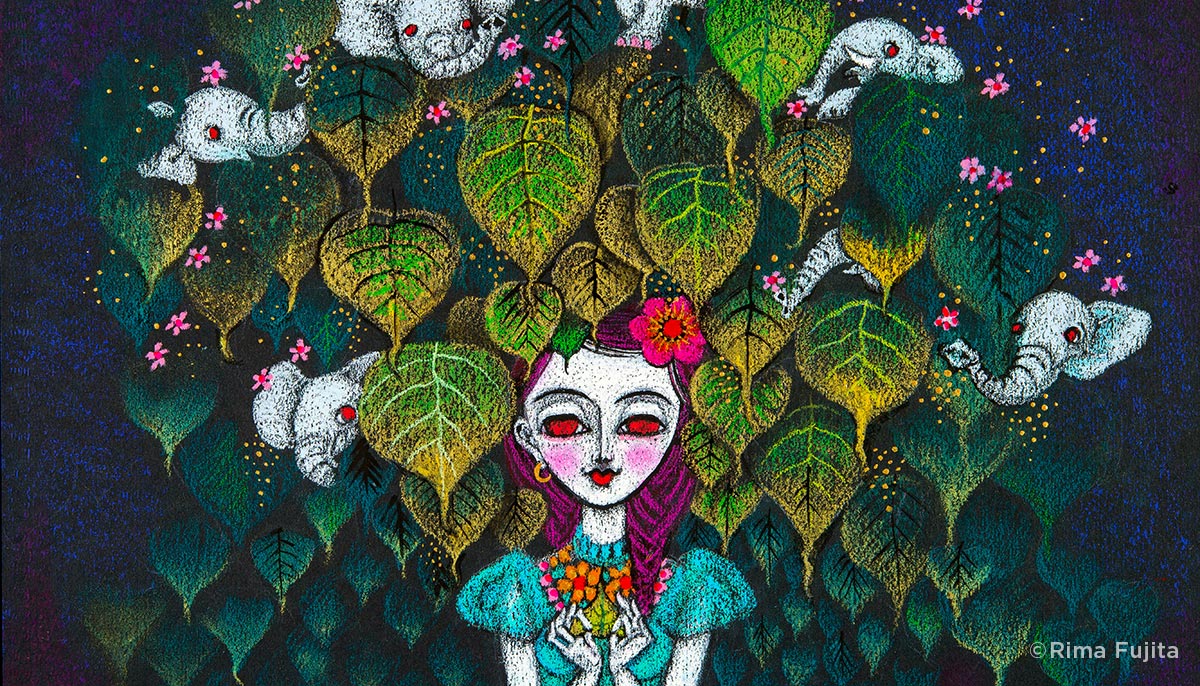Japan’s indie game scene is growing up
At the 2023 edition of BitSummit in Kyoto, there were more games and more developers than ever — but a path to global success remains a challenge. Continue reading…
/cdn.vox-cdn.com/uploads/chorus_asset/file/24806878/PXL_20230714_035832074.MP.jpg)
Ten years ago, a group of game developers in Kyoto started up an indie festival with the aim of promoting and uniting the country’s fragmented independent scene. One hundred seventy people officially showed up to the inaugural BitSummit in 2013, and organizers said they’d aim for at least 200 people next time around.
I went along to the second BitSummit the following year, and it turned out that more than 5,000 others had the same idea. It was an appropriately ramshackle affair, with little to the staging beyond rows of tables in a gaping Kyoto convention center. The majority of exhibitors had traveled from abroad. Super Hexagon composer Chipzel put on a great live performance. The vibes were good, and it felt like something real might be starting, but the Japanese indie scene was clearly still in an embryonic form.
Back in 2014, though, the prevailing tone of discussion was that the entire Japanese games industry was in a bad place. After dominating in the PlayStation 2 era, domestic studios struggled to adapt to the challenges and costs of developing for HD consoles like the PS3, which sold fewer than half as many units as its predecessor locally. Even Nintendo looked to be in big trouble after the Wii U flopped immediately on launch. Several publishers turned their attention to handheld and mobile gaming.
Since then, the Japanese industry has executed a remarkable turnaround. The PS4 and the Switch were both huge successes. Previously niche franchises like Yakuza and Persona have become household names, while Capcom is on an impressive run of revitalizing its own properties. Three of The Game Awards’ last six Game of the Year winners were Japanese, and few would bet against Tears of the Kingdom raising that average this year.
The question I had going into last weekend’s BitSummit, then, was how Japan’s indie scene is doing in the face of all this blockbuster success. Japanese games are as popular as they’ve ever been. So when will Japanese indies step up on the global stage?
“The publishers have been really happy, the developers have been really happy, and in that sense the show has been a big success,” BitSummit co-founder John Davis told me as the show opened to the public on its second day. “We’ve had a lot of people where this is their first BitSummit, and I think we’ve made a great impression on them and shown why this show is different from Tokyo Game Show, or even other shows in the West.”
BitSummit announced that more than 23,700 visitors came to the show this year, its highest-ever attendance figure. “I feel like this year is the first time since 2019 that it’s back to being the BitSummit we all know and love,” Davis says, referencing the varying degrees to which the events of the past three years were limited by pandemic restrictions.
Almost everyone I spoke to over the weekend expressed a similar sentiment. This year’s BitSummit was a really well-put-together event, with a strong mix of big-player publishers and solo exhibitors. It certainly helped that it was the first time since 2019 that overseas developers and media could easily visit Japan, but the focus on domestic talent was stronger than ever.
One early highlight was the reveal of Ratatan, a spiritual successor to Sony’s PSP rhythm-action hit Patapon. Original designer Hiroyuki Kotani tells me that he was inspired by his time at Sony’s “Game Yaroze!” project, which auditioned new ideas for PlayStation games in the ’90s. That tied into the Net Yaroze development kit, allowing hobbyist developers to create their own PS1 games on an exclusive black version of the console.
“Even within Sony, I’d only ever make the kind of game that I’d want to make,” Kotani says. “But after I left, I still really wanted to work on games like Patapon, centered around my philosophy, so that’s the only kind of development that I’ve been involved in.” Kotani is working on Ratatan with Patapon composer Kenmei Adachi and producer Kazuto Sakajiri; the art comes from illustrator Nelnal.
Patapon was released through Sony’s Japan Studio, which put out some of the most creative first-party output across several PlayStation generations, including hits like PaRappa the Rapper and LocoRoco. Sony made the controversial decision in 2021 to shutter the studio and pivot it around Astro Bot developer Team Asobi; any products from that plan are yet to be announced. However, several developers at BitSummit told me under the condition of anonymity that Sony was more actively seeking to strike deals for Japanese indie games than ever before. There was a widespread sense that Sony is attempting to fill a gap in its publishing lineup.
“I just wanted to have fun and try to make it until the end”
“When I talk to platform people here, they pull me aside and say, ‘Hey, what’s this game?’” says Davis, without referring to specific titles or companies. “Publishers are the same way — they come here to find interesting games.”
It’s true that for all the Japanese indie scene’s progress, it’s yet to have a big impact around the world. I could cite mobile megahits like Ojiro Fumoto’s Downwell, revivalist successes like former Castlevania producer Koji Igarashi’s Bloodstained, and viral breakouts like Masafumi Onuki’s Fight Crab as solid representatives. It also can’t go unmentioned that perhaps the most seminal indie game of all time, Daisuke Amaya’s Cave Story, came from Japan. But Japanese indies still don’t regularly enter the zeitgeist in the same way that games like Neon White, Citizen Sleeper, or Vampire Survivors — just to name three from last year — often do in the West.
One of the first Japanese indie hits was Q-Games’ PixelJunk Eden, which was released in 2008 for the PlayStation 3; the new PS5 version of Eden 2 was shown off at this year’s BitSummit. PixelJunk Eden was a minimalist, trippy platformer built around subdued tech house beats and organic visuals from Baiyon, a Kyoto-based artist and musician who loved games but had no prior experience in the industry.
“I wanted to find some local artists who could come up with something visually unlike any other kind of game and that’s when I met Baiyon,” says Dylan Cuthbert, who founded Q-Games after a lengthy career in Japan involving stints at Sony and Nintendo. “I didn’t know what’s indie, what’s AAA, what’s in-between — nothing,” Baiyon tells me. “But I trusted myself and Dylan to see if we could make something cool. And it was fun for me, so I just wanted to have fun and try to make it until the end.”
The conventional expectation for a path to employment in Japan remains much the same as it ever was: you study hard in high school to get into university and find a graduate job at a company that you will likely remain at for the rest of your career. “Nintendo will do an interview and then they’ll employ that person for the rest of their life,” says Cuthbert. “If you get through that interview, Nintendo is agreeing to invest about two million quid into your life. So it really changes your perspective because you’ll never get fired from Nintendo unless you do something really stupid.”
Of course, you can go anywhere in Japan and find creative people like Baiyon — talented musicians, photographers, and painters who figure out how to make an independent living through their art. But until recently, the path to indie game development has been harder for a lot of people here to imagine for themselves, not least because of technical challenges.
“If I’m going to make a game and can’t find anyone like Dylan in Kyoto, should I try to interview at a big company like Nintendo?” Baiyon asks. “It might be kind of fun just for a few weeks,” he adds, hinting that it might not be a whole lot of fun for him beyond that. However, one thing I kept hearing from him and other developers at BitSummit is how tools like Unity and Unreal Engine have made a huge difference in recent years for aspiring indie developers — especially because of improved Japanese language support. I’ve often heard that midsize studios like No More Heroes developer Grasshopper Manufacture used to actively recruit foreign developers in large part to help with the lack of Japanese documentation for their basic technology, which is much less of an issue today.
“This year, we had a lot of good Japanese entries — really unique games.”
This was reflected in much stronger show floor representation from Japanese developers than in BitSummit’s earlier years. “It was tough in the past because there are so many high quality indies from the West, right?” says Davis, who is conscious of striking the right balance. “And those indies that can come here probably are either famous enough or can have a publisher pay for them. You could see an experience gap between them [and Japanese developers], but that’s shrinking. This year, we had a lot of good Japanese entries — really unique games.”
He’s not wrong. Look at Sky the Scraper, a terrifying 2D action game where you swing from window to window in order to clean a tower. Or Death the Guitar, a tight, hyper-violent platformer where a musical instrument exacts revenge for the murder of its owner. Or Unrestricted, a sleek superhero-style action RPG built in Unreal Engine. Or Umbraclaw, a stylish tale of a dead cat making its way back home from the underworld. Or Algolemeth, a monochrome first-person dungeon crawler with a unique automated battle system that reminded me a little of Final Fantasy XII.
Another visible impact at this year’s BitSummit was the widespread presence of the Steam Deck. There was a large official booth for Valve’s PC gaming handheld, and it was also near-ubiquitous elsewhere as a standard demo device. The Deck makes sense as a convenient way to show off games, of course, but it could have particular resonance in the Japanese market.
Demand in Japan has outpaced expectations, according to Yukie Adachi of Komodo, which handles official Steam Deck sales in Asia. Adachi told me that the handheld was riding a wave of generally increased interest in PC gaming in Japan. This is happening despite certain headwinds here, like a significantly delayed release leading to a higher price due to the yen’s subsequent collapse against the US dollar.
A vibrant PC gaming market is crucial to indie developers, who often rely on early access programs or releases that can exist outside of stores run by major platform operators. Japan’s PC gaming scene, however, has historically been very niche, with consoles and particularly handheld systems dominating sales in recent decades. The Steam Deck isn’t exactly mass market, but as a portable device with console-style software, it’s potentially the most accessible gaming PC ever to go on sale in Japan.
“Can you get on Game Pass? Can you get on the front page of Steam? Those kind of things are so hard for indies — not just Japanese.”
I thought this year’s BitSummit was by far the most successful to date at presenting a strong case for the state of Japanese indie games. The local representation on the show floor was stronger than ever. Official attendance set a new record, and the show felt a lot more diverse than typical game shows in Japan. The event itself was professionally staged, and there are plans to expand to a whole other floor of the convention center next year. I have no doubt there’d be enough exhibitors to justify it.
That said, there’s still a lot of work to do before Japanese indie developers can reach the international renown of their corporate compatriots. For all the creativity on show, it does feel like there’s less of an established pathway to find an audience than you might hope for from one of the world’s biggest gaming markets.
“I don’t think there’s a lot of difference in ideas or gameplay quality,” says Davis. “It’s more about what kind of support you can have. What kind of marketing can you have? You know, can you get on [Xbox] Game Pass? Can you get on the front page of Steam? Those kind of things are so hard for indies — not just Japanese.”
That’s worth keeping in mind. The sheer volume of high-profile Western indie hits each year obscures the far larger number of games that fail to find an audience. In many ways, Japanese developers have an even harder road to success — fewer publishers, fewer resources, and fewer potential customers. And very little on show at BitSummit seems to have been developed with a view to global domination.
But Japanese games are more popular than ever, and there’s clearly a well of talent here just waiting to be tapped. I’m reminded of Demon’s Souls, an unheralded action RPG that turned out to be one of the most influential games of the century and catapulted FromSoftware to international renown. No one would have predicted that trajectory — Sony famously passed on the publishing rights — but the game found its audience nonetheless.
I would say it’s more likely than not that there are countless Japanese indie developers working on games right now with the same sort of breakout potential. Maybe that work is happening in their spare time away from their day job. Maybe they could use a hand with the right connection to an artist, programmer, or publisher. Maybe they just want to bounce ideas off someone.
That’s what BitSummit is for. It’s already become an essential event in the Japanese gaming calendar — and I think it’s only a matter of time before its participants start to make more noise around the world.
Photography by Sam Byford for The Verge

 JimMin
JimMin 
































